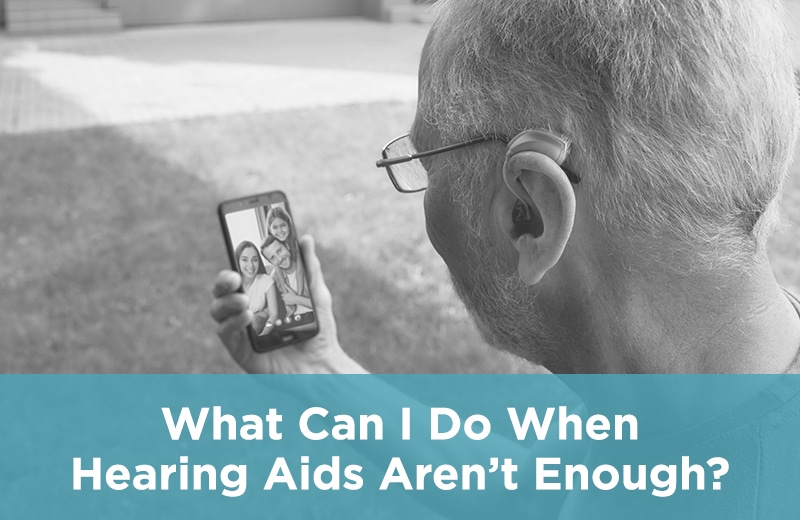What Can I Do When Hearing Aids Aren’t Enough?

If there’s one thing we know for sure, it’s that hearing aids are the best way to restore lost hearing. However, it’s normal to wonder about your options when hearing aids aren’t enough on their own. When hearing aids don’t restore your hearing or that of your loved one, then a Doctor of Audiology can help you explore your options. Here’s what to know about your hearing aid alternatives when hearing aids aren’t enough.
Determining Signal-to-Noise Ratio
Our Doctors of Audiology typically measure your hearing treatment in what’s called a signal-to-noise ratio. In short, it’s the ratio of sounds or signals you want to hear versus any background noise present. Patients with hearing loss may have a poor signal-to-noise ratio, meaning they have trouble focusing on a specific sound in a noisy environment. Some hearing aids with directional microphones and advanced computer processing improve this ratio drastically, but some patients might need additional tools on top of hearing aids to further improve this ratio.
Assistive Listening Devices
There are many devices available that can help improve the function of your hearing aids. Telecoils, for example, can stream sounds directly to your hearing aid from other systems like a loop system in a theatre. Other devices use FM systems where a speaker wears a small microphone that feeds sound directly to the hearing aids. Finally, many modern appliances and devices like TVs can stream sound directly to hearing aids via Bluetooth, like in the case of smartphones. The compatibility of many assistive listening devices will depend on your specific hearing aids, so make sure to meet with your Doctor of Audiology if you’d like to upgrade or explore the full functionality of your hearing aids.
Other Assistive Devices
There are many different accessibility technologies that can help patients with hearing loss that don’t rely on hearing aid technology. Instead, they rely on other senses like sight or feel. These can include alarm clocks that shake the bed or doorbell systems that flashlights rather than emit sound. However, the most common accessibility technology is closed captions. Although most people are familiar with this function on the TV, it can also be used with various apps during phone calls, listening activities, and conversations. These technologies can be extremely helpful to patients who have hearing loss by reducing anxiety around social interactions and everyday activities which rely on hearing.
Schedule an Appointment
There are many different ways to restore hearing and live your best life. Meet with our Doctors of Audiology during an appointment to learn more!



